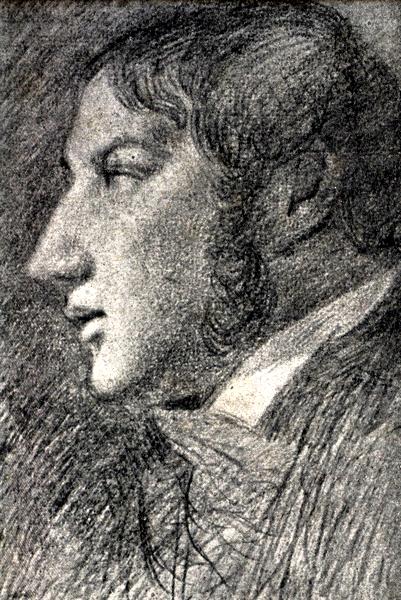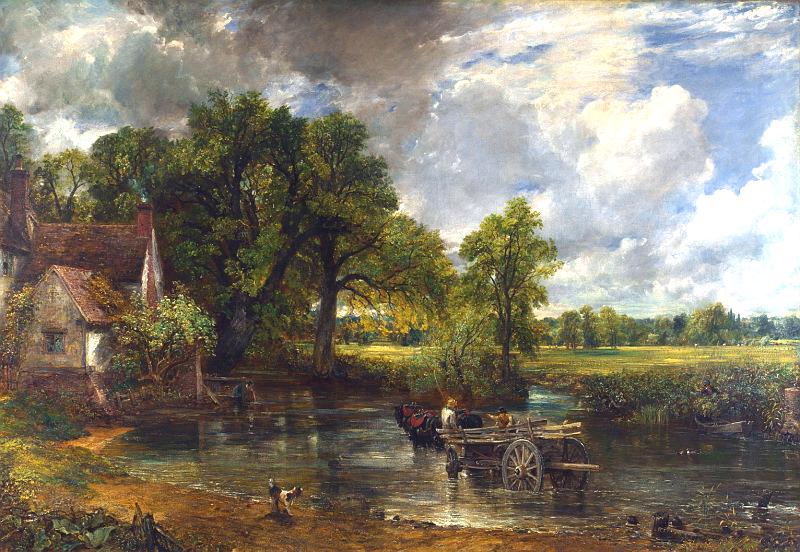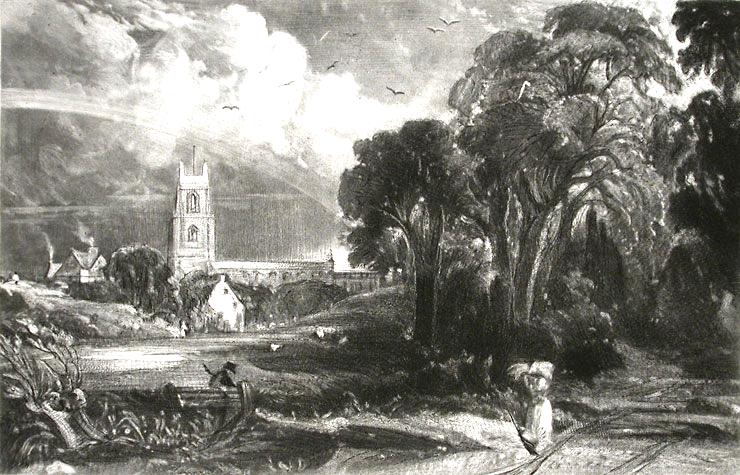
- •Michelangelo buonarroti (1475 – 1564)
- •I. Practice the pronunciation of the following words and word-combinations and learn them.
- •II. Practice the pronunciation of the following (a) toponyms and (b) proper names:
- •Thomas gainsborough (1727 – 1788)
- •I. Practice the pronunciation of the following words and word-combinations and learn them.
- •II. Practice the pronunciation of the following (a) toponyms and (b) proper names:
- •John constable (1776 – 1837)
- •I. Practice the pronunciation of the following words and word-combinations and learn them.
- •II. Practice the pronunciation of the following (a) toponyms and (b) proper names:
- •The dutch school
- •I. Practice the pronunciation of the following words and word-combinations and learn them.
- •II. Practice the pronunciation of the following (a) toponyms and (b) proper names:
- •The french impressionists
I. Practice the pronunciation of the following words and word-combinations and learn them.
mainstream ['meɪnstri:m] – основное направление
to approach smth [ə'prəʊtʃ] – (здесь перен.) подходить к чему-л.;
осуществлять подход к чему-л.
to swallow up smth ['swɒləʊ 'ʌp] – (здесь перен.) поглощать что-л.
to turn smth to human use ['tз:n … tə 'hju:mən 'ju:s] –
– обращать что-л на пользу человеку
a constructed composition [kən'strʌktɪd ˌkɒmpə'zɪ∫n] – архитектурная композиция
Baroque [bə'rɒk] – Барокко (стиль)
varnish ['vɑ:nɪ∫] – лак
to supplement smth with smth else ['sʌplɪmənt] – дополнять что-л. чем-л.
an oil sketch ['ɔɪl sket∫] – набросок маслом
made outdoors ['meɪd aʊt'dɔ:z] выполненный на пленэре
keynote ['ki:nəʊt] – (муз.) основная нота ключа;
(здесь перен. ) лейтмотив, основная мысль
a standard of scale ['stændəd əv 'skeɪl] – единица шкалы (измерения)
smb's surrender to smth [sə'rendə] – (здесь) чьё-л преклонение перед чем-л
passionate ['pæ∫ənət] – страстный
acknowledged [ək'nɒlɪdʒd] – (обще)признанный
superb [sjʊ'pз:b] – превосходный, великолепный
orchestra ['ɔ:kestrə] – оркестр
highlight ['haɪlaɪt] – блик (света)
to set in motion a new current (in painting) ['set ɪn 'məʊ∫n ə 'nju: 'kʌrənt]
– «запустить», инициировать новое «течение» (в живописи),
дать начало новому движению (направлению) (в живописи)
to culminate in smth ['kʌlmɪneɪt] – закончиться чем-л.
a chord of colour ['kɔ:d əv 'kʌlə] – гамма цвета
to equal ['ɪkwəl] – равняться
to be equaled by smth – быть равноценным (равнозначным) чему-л.
II. Practice the pronunciation of the following (a) toponyms and (b) proper names:
(a) Stour (the River) ['staʊə] – р. Стаур
(в графстве Суффолк, восточная Англия)
Stoke-by-Nayland ['stəʊk baɪ 'neɪlənd] – (посёлок) Стоук-бай-Нейланд
(b) Titian ['tɪ∫(ə)n] – Тициан, Тициано Вечеллио (1490 – 1576)
Read and translate the text.
John constable (1776 – 1837)
The mainstream of English painting in the first half of the nineteenth century was landscape. Constable and Turner, the greatest of the landscapists, approached nature with excitement. At that time nature was beginning to be swallowed up by the expanding cities of the Industrial Revolution.

 John
Constable, the son of a miller on the River Stour in Suffolk,
honoured all that was natural and traditional, including the age-old
occupation of farmer, miller, and carpenter, close to the land whose
fruits and forces they turned to human use. He loved the poetic
landscapes of Gainsborough, he studied the constructed compositions
of the Baroque, and he admired Ruisdale’s skies. Rebelling against
the brown tonality then fashionable in landscape painting –
actually the result of discoloured varnish darkening the Old Masters
– he supplemented his observations of nature with a study of the
vivacity of Rubens’ colour and brushwork.
John
Constable, the son of a miller on the River Stour in Suffolk,
honoured all that was natural and traditional, including the age-old
occupation of farmer, miller, and carpenter, close to the land whose
fruits and forces they turned to human use. He loved the poetic
landscapes of Gainsborough, he studied the constructed compositions
of the Baroque, and he admired Ruisdale’s skies. Rebelling against
the brown tonality then fashionable in landscape painting –
actually the result of discoloured varnish darkening the Old Masters
– he supplemented his observations of nature with a study of the
vivacity of Rubens’ colour and brushwork.
As early as 1802, Constable started to record the fleeting aspects of the sky in the rapid oil sketches made outdoors. “It will be difficult to name a class of landscape in which sky is not the keynote, the standard of scale, and the chief organ of sentiment”, he wrote. Constable systematically studied cloud formation in 1821-22. These studies show his surrender to the forces of nature, a passionate self-identification with sunlight, wind, and moisture.
Constable
never left England and made dutiful sketching tours through regions
of acknowledged scenic beauty. His superb “The Hay Wain”, of
1821, sums up his ideals and his achievements. Composed as if
accidentally – though on the basis of many preliminary outdoor
studies – the picture, painted in the studio, shows Constable’s
beloved Stour with its trees, a mill, and distant fields. In his
orchestra of natural colour the solo instrument and conductor at once
is the sky. T he
clouds sweep by; full of light and colour, and their shadows and the
sunlight spot the field with green and gold. As the stream ripples,
it mirrors now the trees, now the sky. The trees are made up of many
shades of green and patches of light reflect from their foliage.
These white highlights were called “Constable’s snow”. “The
Hay Wain” was triumphantly exhibited at the Salon of 1824, where
Constable’s broken colour and free brushwork set in motion a new
current in French landscape art, which later culminated in the
Impressionist movement.
he
clouds sweep by; full of light and colour, and their shadows and the
sunlight spot the field with green and gold. As the stream ripples,
it mirrors now the trees, now the sky. The trees are made up of many
shades of green and patches of light reflect from their foliage.
These white highlights were called “Constable’s snow”. “The
Hay Wain” was triumphantly exhibited at the Salon of 1824, where
Constable’s broken colour and free brushwork set in motion a new
current in French landscape art, which later culminated in the
Impressionist movement.
In 1829 Constable became member of the Royal Academy.
 In
later life, after the death of his wife, Constable entered a period
of depression in which his passionate communion with nature reached a
pitch of semi-mystical intensity. One of his late pictures is
“Stoke-by-Nayland”, of 1836-37, a large canvas in which the
distant church tower, the wagon, the plough, the horses, and the boy
looking over the gate are instruments on which light plays. The
symphonic breadth of the picture, and its crushing chords of colour
painted in a rapid technique, bring to the finished painting the
immediacy of a colour sketch. Such pictures are equaled in earlier
art only by certain landscape backgrounds in Titian or by the
mythical reveries of the late Rembrandt.
In
later life, after the death of his wife, Constable entered a period
of depression in which his passionate communion with nature reached a
pitch of semi-mystical intensity. One of his late pictures is
“Stoke-by-Nayland”, of 1836-37, a large canvas in which the
distant church tower, the wagon, the plough, the horses, and the boy
looking over the gate are instruments on which light plays. The
symphonic breadth of the picture, and its crushing chords of colour
painted in a rapid technique, bring to the finished painting the
immediacy of a colour sketch. Such pictures are equaled in earlier
art only by certain landscape backgrounds in Titian or by the
mythical reveries of the late Rembrandt.
Illustrations: 1. Constable, Self-portrait (1806), pencil on paper; 2. Jacob van Ruisdael. The Mill at Wijk near Duurstede (1670); 3. Constable, The Hay Wain (1821); 4. Constable, Stoke-by-Nayland (1836-37).
TASKS:
I. Give Russian equivalents of the following:
to approach nature with excitement; to supplement smth. with smth. else; the poetic landscape; the brown tonality; oil sketches made outdoors; as early as (some year); a surrender to the forces of nature; self-identification with sunlight and wind; to make sketching tours; regions of scenic beauty; preliminary outdoor studies; patches of light; free brushwork; to set in motion; a finished painting; a colour sketch; smb’s passionate communion with nature; to reach some pitch.
II. Give English equivalents of the following:
дополнить что-л. к чему-л. / присовокупить что-л. к чему-л.; законченная картина; взбунтоваться против чего-л.; цветной набросок; покрывать что-л. зелёными пятнами; гибкий стальной шпатель (мастихин); достичь (какого-л.) уровня; пятна света; эскизы маслом; написанные на пленэре; отождествление себя с солнечным светом и ветром; живописные места; поэтический пейзаж; коричневый тон; ездить по стране и писать этюды; выцветший лак.
III. Match the words on the right with their synonyms on the left:
1. triumphant A. enthusiasm
2. excitement B. preparatory
3. preliminary C. straightforwardness
4. vivacity D. trend
5. hue E. the principal motif
6. occupation F. in the plain air
7. immediacy G. victorious
8. current H. tone
9. keynote I. pursuit
10. outdoors J. liveliness
IV
PRE-TASKS:
